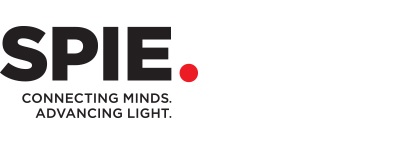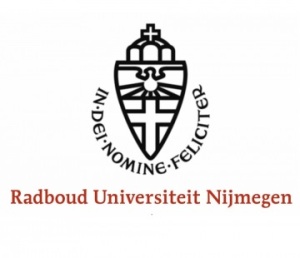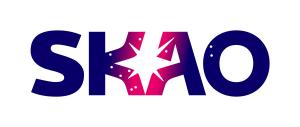From SPIE – The International Society for Optics and Photonics
5.16.24 [Just today from the institution]
Karen Thomas
Jessica Dempsey of ASTRON discusses the challenges and opportunities for sustainable astronomy at SPIE Astronomical Telescopes + Instrumentation

Credit: de Volkskrant
“Astrophysics was my gateway drug to playing with instruments and problem-solving big toys,” says Jessica Dempsey of ASTRON and Radboud University.
“I love building discovery engines. And being offered the opportunity to build them in remarkable places, such as Amundsen–Scott South Pole Station in Antarctica, set me on the path to a career in astronomical instrumentation and telescopes. The rest has just been an adventure I am making up as I go along.”
What are some of your responsibilities as ASTRON Director and Radboud University’s Ethics in Astronomy Professor?
At ASTRON, I am privileged to work with a team that is unparalleled in end-to-end expertise in low frequency radio astronomy, from development, construction and operation of radio astronomical instrumentation and telescopes, including LOFAR, the world’s leading low-frequency observatory.

I work with world-leading scientific teams, harvesting these formidable data sets to probe the furthest frontiers of the invisible universe.
At Radboud, well, it’s an entirely different frontier. Astronomy ethics has not yet been developed into a fully-fledged field, but it’s long overdue. We have pieces of the puzzle, mostly in scientific-research ethics, but in my experience, particularly with the colonization — previous and current — of astronomy and the climate/resource impacts, we have not critically explored the ethical frameworks we now desperately need to navigate how we impact our communities, our society, and our footprint on the planet. There are exciting potentials to explore from other fields and from non-Western knowledge systems that can make our science stronger and more diverse, as well as from a foundation of community engagement, and ethical frameworks.
What do you see as the most important aspect of your work at ASTRON at this time?
We need to navigate the upcoming radio-astronomy renaissance: how do we keep up with the data needs of these huge but incredible observatories, and how do we balance the resource requirements with the needs of both our science community and our societal obligations?
Radio astronomy right now has a high complexity level and needs expertise. We must ensure we lower the barriers of access to astronomy and create broader opportunity for a more diverse community. We have happy problems — too many exciting things to do and not enough time or resources. So we need a less wasteful education and workforce-development pipeline. At some point, we hit now (new?) economies of scale: if we cannot do everything, we must align together and select the right instrument priorities.
What is most exciting/surprising about your work? What are some of the challenges?
Coming back to low-frequency astronomy after a decade and more away, this field is entirely transformed — I felt like I was going back to school, which has been so much fun. It is mind-boggling to me the new scientific areas being explored. LOFAR and SKAO are discovery engines in every sense, and the technology evolution in the last years is equally astonishing.
Our problem is too many wonderful new radio astronomical infrastructures and too much data. We are moving into a new paradigm where the limit on our science is not hours available on sky, but the cost and time of data processing and storage. We need to navigate this transition in a way that still allows us to push the astronomy frontiers but is still affordable and sustainable.
You’re committed to inclusive astronomy. What are some of the ways you advocate for diversity? And what can other institutions do?
Prioritize inclusion, not just diverse hiring. Inclusive practice is about working to retain and value all the perspectives in your organization, and place more concentration on supporting and developing your minority voices. If you create a truly inclusive organization, the diversity comes naturally, as you create a place where people know they are valued. Get your house to be a safe place. Then you can move to promoting diverse recruitment, confident that your new team members will have a good experience when they arrive. Then they stay and it becomes self-supporting.
What do you see as the future of astronomy? What would you like to see?
If we take a leadership role in community-driven science, we all win. Starting with evolving our astronomy organizations to better reflect the demographics of the communities we reside in and tuning our priorities to align them, we make astronomy a pathfinder for not just understanding our place in the universe, but how the field can bridge the widening divides in our society. Our technological advances, if aligned with the critical needs of climate solutions, can pave the way for hope in green scientific futures as well. We need to make sure astronomy is relevant to the evolving and urgent needs of our communities.
What would you like attendees to learn from your talk at SPIE Astronomical Telescopes + Instrumentation?
I am excited to lay out the imminent radio-astronomy renaissance and geek out over the technological marvels that these incredible discovery engines are going to be. And I want to pose some challenging questions regarding the data deluge that is accompanying this revolution. Can we afford our scientific frontiers? And can we promise the next generation of young astronomers more: can the observatories of the next decade be more ambitious and promise truly green PhDs, zero-waste astronomy, carbon-negative astronomical infrastructures, and a commitment to harnessing our cutting-edge technology advancements for our critical climate challenges? I believe we can do all of this and retain our marvellous astronomical discovery space while we do it.
See the full article here .
Comments are invited and will be appreciated, especially if the reader finds any errors which I can correct.
five-ways-keep-your-child-safe-school-shootings
Please help promote STEM in your local schools.
SPIE (formerly the Society of Photographic Instrumentation Engineers, later the Society of Photo-Optical Instrumentation Engineers) is an international not-for-profit professional society for optics and photonics technology, founded in 1955. It organizes technical conferences, trade exhibitions, and continuing education programs for researchers and developers in the light-based fields of physics, including: optics, photonics, and imaging engineering. The society publishes peer-reviewed scientific journals, conference proceedings, monographs, tutorial texts, field guides, and reference volumes in print and online. SPIE is especially well-known for Photonics West, one of the laser and photonics industry’s largest combined conferences and tradeshows which is held annually in San Francisco. SPIE also participates as partners in leading educational initiatives, and in 2020, for example, provided more than $5.8 million in support of optics education and outreach programs around the world.
Publications
The society’s first publication, SPIE Newsletter, was launched in 1957. In 1959, the society published its first book, SPIE Photographic Instrumentation Catalog. The newsletter morphed into the society’s first journal, now known as Optical Engineering, SPIE’s flagship monthly journal. Throughout the years, SPIE has created many publications including journals, magazines, newspapers, websites, and books.
Scientific journals
All SPIE journals are peer-reviewed.
Advanced Photonics Co-published by SPIE and Chinese Laser Press, Advanced Photonics is a highly selective, open access, international journal publishing innovative research in all areas of optics and photonics, including fundamental and applied research.
Journal of Applied Remote Sensing (JARS) is an online-only, quarterly published journal on remote sensing.
Journal of Astronomical Telescopes, Instruments, and Systems (JATIS) is published quarterly and covers development, testing, and application of telescopes, instrumentation, techniques, and systems for ground- and space-based astronomy.
Journal of Biomedical Optics (JBO) is published monthly with the latest on optical technology in health care and research.
Journal of Electronic Imaging (JEI), co-published bi-monthly with the Society for Imaging Science and Technology, publishes papers on electronic imaging science and technology.
Journal of Medical Imaging (JMI) is published quarterly and covers fundamental and translational research and applications focused on photonics in medical imaging, which continue to yield physical and biomedical advancements in early detection, diagnostics, and therapy of disease as well as in the understanding of normal.
Journal of Micro/Nanopatterning, Materials, and Metrology Advanced Photonics Co-published by SPIE and Chinese Laser Press, Advanced Photonics is a highly selective, open access, international journal publishing innovative research in all areas of optics and photonics, including fundamental and applied research.
Journal of Nanophotonics (JNP) is an online-only, quarterly published journal on fabrication and application of nanostructures that generate or manipulate light from the infrared to the ultraviolet regimes.
Journal of Optical Microsystems (JOM) is published quarterly and contains papers on cutting-edge research of optical and photonic microsystems, from materials and fabrication of micro-optical and photonic components, through assembly and packaging, to systems and applications.
Journal of Photonics for Energy (JPE) is an e-journal published quarterly that covers fundamental and applied research applications of photonics for renewable energy harvesting, conversion, storage, distribution, monitoring, consumption, and efficient usage.
Neurophotonics, published quarterly, is at the interface of optics and neuroscience covering advances in optical technology applicable to study of the brain and their impact on the basic and clinical neuroscience applications.
Optical Engineering (OE) is the flagship monthly journal of the society, with papers on research and development in all areas of optics, photonics, and imaging science and engineering.




